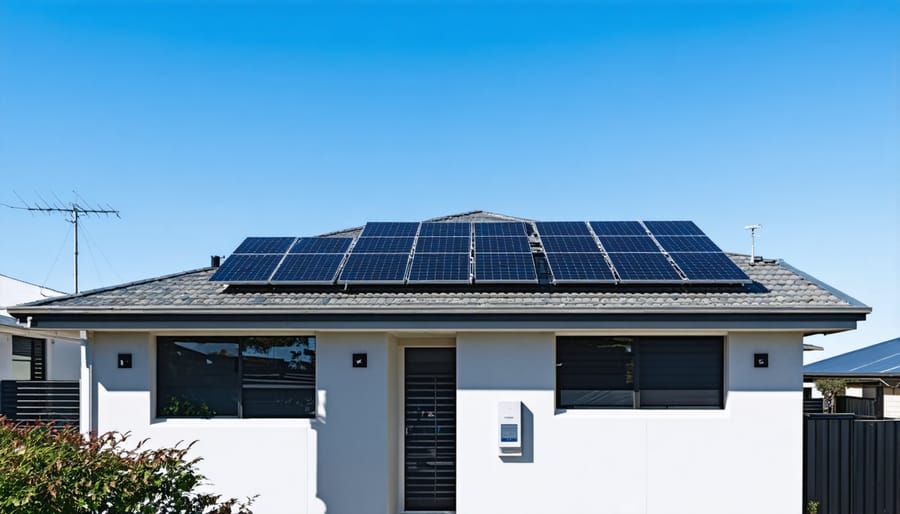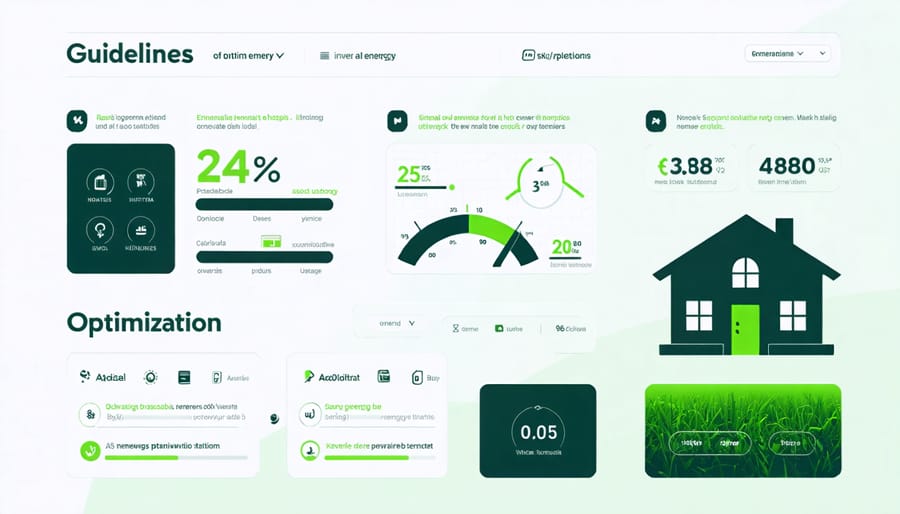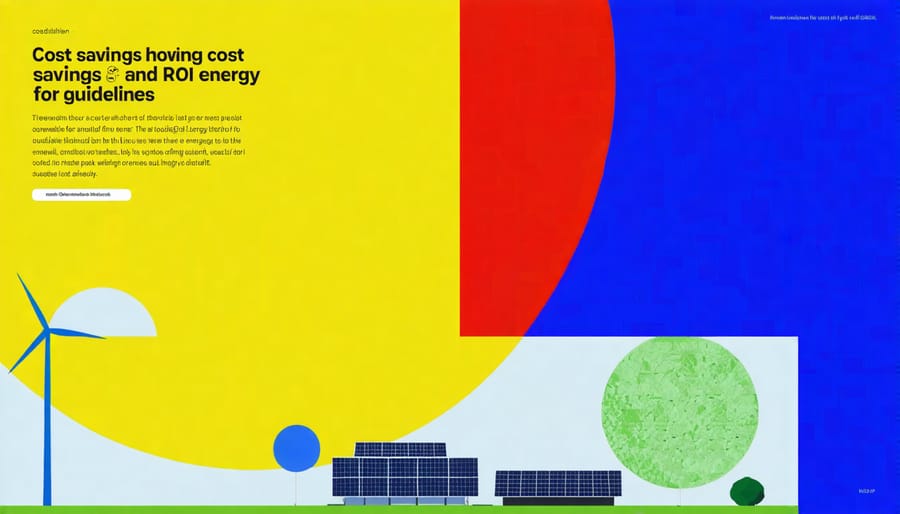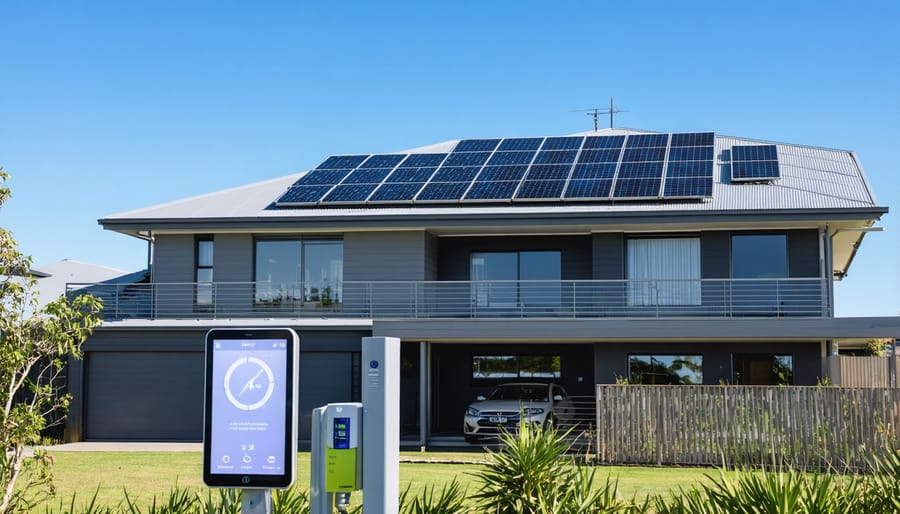The global shift towards renewable energy isn’t just an environmental imperative—it’s becoming an economic necessity. Australia stands at the forefront of this energy revolution, with abundant solar, wind, and bioenergy resources positioning us to lead the transition to a sustainable future. Integrating these renewable sources into our existing power infrastructure presents both remarkable opportunities and significant challenges that demand innovative solutions.
Recent technological breakthroughs have transformed renewable energy from an ambitious vision into a practical reality. Smart grid systems now enable seamless integration of multiple renewable sources, while advanced storage solutions address intermittency concerns that once limited widespread adoption. In communities across Australia, from urban centers to remote outback regions, successful renewable integration projects demonstrate the viability of sustainable power systems.
The key to successful renewable energy integration lies in a balanced, systematic approach that combines technological innovation with practical implementation strategies. By leveraging our natural advantages—including some of the world’s highest solar radiation levels and consistent coastal winds—Australia can create a resilient, sustainable energy network that powers our economy while protecting our environment. This transformation isn’t just about replacing fossil fuels; it’s about building a smarter, more efficient energy system that benefits everyone.
Starting Your Renewable Energy Journey at Home
Solar Power: Your First Step to Energy Independence
Starting your renewable energy journey begins with solar power, a proven and accessible technology that’s particularly effective in Australia’s sun-rich climate. When integrated with sustainable home design, solar solutions can dramatically reduce your dependence on grid electricity while shrinking your carbon footprint.
Begin by assessing your property’s solar potential. North-facing roof areas receive the most sunlight in Australia, making them ideal for panel placement. A typical household usually requires a 6.6kW system, though your specific needs may vary based on energy consumption patterns and available roof space.
Solar hot water systems offer another practical entry point, using the sun’s energy to heat water rather than generating electricity. These systems can slash your hot water costs by up to 75%, making them a smart investment for most Australian homes.
Before installation, consider these key factors:
– Local council requirements and restrictions
– Roof condition and orientation
– Current energy usage patterns
– Available rebates and incentives
– Future energy needs
Start with a professional energy audit to determine the most effective system size for your needs. Many installers offer free assessments and can help you navigate available government incentives. Remember, quality matters – while cheaper systems might seem attractive initially, investing in reliable components from reputable manufacturers will ensure better performance and longevity.

Smart Home Integration for Maximum Efficiency
Modern smart home technology is revolutionising how Australians harness renewable energy. By implementing intelligent systems, homeowners can achieve optimal smart resource management while maximising their renewable energy investments.
Smart meters and energy monitoring systems provide real-time data about energy consumption patterns, allowing households to adjust their usage accordingly. These systems can automatically shift energy-intensive tasks like running the dishwasher or charging electric vehicles to times when solar production is at its peak.
Home automation hubs can integrate with weather forecasting services to predict solar generation capacity and adjust household systems accordingly. For example, on particularly sunny days, the system might automatically pre-cool your home during peak solar production hours, reducing reliance on grid power during evening peaks.
Battery management systems have become increasingly sophisticated, using artificial intelligence to learn household consumption patterns and optimise energy storage. These systems can decide when to store excess solar power and when to feed it back to the grid based on electricity prices and usage predictions.
Voice-activated assistants and smartphone apps put this control literally at your fingertips, making it easy to monitor and adjust energy usage on the go. Many Australian households are already seeing significant reductions in their energy bills by combining these smart technologies with their renewable energy systems, sometimes achieving savings of up to 40% on their annual energy costs.

Bioenergy Solutions for Australian Homes
Home Heating with Biomass
Biomass heating systems offer a sustainable alternative to traditional heating methods, particularly in rural and regional Australian communities. These systems harness organic materials like wood pellets, agricultural waste, and forestry residues to generate clean, renewable heat for homes and commercial buildings.
In practice, modern biomass heating systems are highly efficient and automated. A typical residential setup includes a pellet boiler or furnace connected to a storage hopper, which automatically feeds fuel as needed. Many Australian homeowners are discovering that these systems can reduce heating costs by up to 50% compared to electric or gas heating, while significantly lowering their carbon footprint.
The Hepburn Shire community in Victoria serves as an excellent example of successful biomass heating implementation. Their community centre switched to a wood pellet boiler system in 2019, using locally sourced waste wood from sustainable forestry operations. The system now heats the entire facility while supporting local jobs in the bioenergy supply chain.
Installation considerations include adequate storage space for fuel, proper ventilation, and regular maintenance requirements. Most systems need an annual professional service, though day-to-day operation is largely hands-free. Modern biomass boilers also feature advanced controls for optimal efficiency and can integrate with existing heating infrastructure.
For those considering biomass heating, government incentives and rebates are often available through various state programs. The initial investment typically pays for itself within 3-5 years through reduced heating costs, making it an economically viable option for long-term sustainability. Many suppliers now offer turnkey solutions, handling everything from system design to installation and maintenance.
Garden to Energy: Using Green Waste
Transforming your garden and kitchen waste into renewable energy is a brilliant way to contribute to a sustainable future while reducing your household’s environmental impact. By implementing smart zero-waste home practices, you can harness the power of organic materials to generate clean energy.
The process begins with effective organic waste management, collecting materials like grass clippings, fallen leaves, fruit and vegetable scraps, and even coffee grounds. These materials can be processed through various methods, including anaerobic digestion or biomass conversion, to produce biogas or other forms of renewable energy.
For the average Aussie household, a small-scale biodigester can convert approximately 2-3 kilograms of kitchen waste daily into enough biogas for cooking one meal. Some innovative gardeners are already using simple DIY systems to power their greenhouse heaters or outdoor lighting using this technology.
Local councils across Australia are increasingly supporting household green waste initiatives. The City of Melbourne, for example, has implemented a successful program where residents’ garden waste is converted into clean energy at community-scale biogas facilities. This not only reduces landfill waste but also provides a sustainable energy source for local facilities.
To get started, consider setting up a dedicated collection system for your organic waste. Many hardware stores now stock home biodigesters, making it easier than ever to transform your waste into usable energy. Remember to maintain a good balance of green and brown materials, and keep the system well-maintained for optimal energy production.
Cost-Saving Benefits and Government Incentives
Return on Investment Timeline
The financial returns from renewable energy integration typically follow a predictable and encouraging pattern. In the Australian context, most solar installations start showing positive returns within 3-5 years, while wind energy systems often break even in 5-7 years, depending on location and scale.
For residential solar installations, households can expect to reduce their electricity bills by 50-90% from day one, with complete system payback achieved in approximately 4 years. Commercial installations often see even faster returns due to higher daytime energy consumption and bulk purchasing advantages.
Battery storage systems, while requiring a larger initial investment, are becoming increasingly cost-effective. Current estimates show payback periods of 7-10 years, with this timeline shortening as technology improves and prices continue to fall. Many businesses report energy cost savings of 30-40% in the first year alone after implementing integrated renewable systems.
Feed-in tariffs and government incentives can significantly accelerate these returns. The Smart Energy Council reports that businesses combining solar with energy management systems are achieving ROI in as little as 2.5 years. Additionally, property values typically increase by 3-4% with the installation of renewable energy systems, providing immediate equity benefits.
Looking at long-term returns, most renewable energy systems continue generating value for 20-25 years, well beyond their payback period, making them excellent long-term investments for both residential and commercial applications.

Available Rebates and Support Programs
Australia offers numerous incentives to make renewable energy integration more accessible and affordable. The federal government’s Small-scale Renewable Energy Scheme (SRES) provides financial incentives for installing solar panels, wind systems, and solar water heaters through Small-scale Technology Certificates (STCs). These certificates can significantly reduce initial installation costs, often by thousands of dollars.
The state governments complement these federal initiatives with their own support programs. Victoria’s Solar Homes Program offers rebates up to $1,400 for solar panel installation and interest-free loans for eligible households. Queensland’s Regional and Remote Communities Energy Program provides grants for communities transitioning to renewable energy solutions.
For businesses, the federal government’s instant asset write-off scheme allows immediate deduction of renewable energy investments, while the Emissions Reduction Fund offers opportunities to earn carbon credits through clean energy projects.
Local councils across Australia frequently provide additional support through environmental upgrade agreements and sustainable business programs. Many electricity retailers also offer feed-in tariffs for excess energy fed back into the grid, though rates vary by location and provider.
To maximize available benefits, consider consulting an accredited renewable energy installer who can guide you through eligible rebates and programs specific to your situation. Regular updates to these incentives mean it’s worth checking government websites or speaking with energy advisors to ensure you’re accessing all available support.
Community Success Stories
Across Australia, communities are leading the way in renewable energy integration, demonstrating remarkable success stories that inspire others to follow suit. The township of Yackandandah in Victoria stands as a shining example, having achieved its 100% renewable energy target through a combination of solar installations and community battery storage. The local community-owned energy retailer not only powers homes but also reinvests profits into further sustainable initiatives.
In South Australia, the Coober Pedy Remote Area Energy Supply has transformed the outback mining town’s energy landscape. By combining solar, wind, and battery storage, the community has reduced diesel consumption by 70% while maintaining reliable power supply in extreme desert conditions. This hybrid system has become a model for remote communities nationwide.
The Byron Bay Railroad Company showcases innovation on a smaller scale, operating the world’s first solar-powered train. This project demonstrates how tourist attractions can embrace renewable energy while preserving historical charm. The train’s success has inspired similar initiatives in other tourism-focused communities.
Western Australia’s Perenjori demonstrates how microgrids can enhance energy reliability in remote areas. Their integrated solar and battery system has reduced power outages by 90%, proving that renewable solutions can outperform traditional grid connections in reliability and efficiency.
The Aboriginal community of Doomadgee in Queensland has embraced solar power, reducing diesel dependency while creating local employment opportunities. Their 304kW solar farm powers 100 homes and has become a source of community pride and economic benefit.
These success stories share common elements: strong community engagement, practical implementation strategies, and tangible benefits beyond environmental impact. They demonstrate how renewable energy integration can strengthen community bonds, create local jobs, and build resilience while reducing carbon emissions. Most importantly, they provide proven blueprints for other communities looking to embark on their renewable energy journey.
The journey toward a renewable energy future is well underway in Australia, and the path forward is clearer than ever. By embracing a mix of renewable technologies, implementing smart grid solutions, and fostering community engagement, we can accelerate our transition to sustainable energy systems. The success stories from regions like South Australia, which has achieved over 60% renewable energy penetration, demonstrate that this transformation is not only possible but economically beneficial.
As we’ve explored throughout this article, the key to successful integration lies in a balanced approach: combining various renewable sources, investing in energy storage solutions, and upgrading our grid infrastructure. The challenges we face are significant but surmountable with proper planning and commitment.
For individuals and organizations looking to contribute to this transformation, several practical steps are available:
1. Conduct an energy audit to identify opportunities for renewable integration
2. Connect with local renewable energy initiatives and support groups
3. Explore available government incentives and funding programs
4. Consider participating in community renewable energy projects
5. Invest in energy storage solutions for your home or business
The future of renewable energy in Australia is promising, with technological advances and decreasing costs making sustainable solutions more accessible than ever. By taking action today and supporting renewable energy initiatives, we can all contribute to building a cleaner, more sustainable energy landscape for future generations.
Remember, every step toward renewable energy integration, no matter how small, contributes to our collective progress toward a sustainable future.

